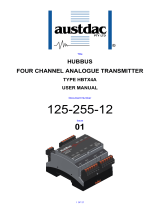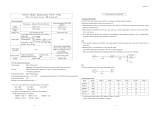
7SR10 Description of Operation
©2018 Siemens Protection Devices Limited Chapter 1 Page 2 of 77
Contents
Section 1: Introduction ....................................................................................................................................... 8
1.1 Current Transformer Circuits .............................................................................................................. 8
1.2 External Resistors.............................................................................................................................. 8
1.3 Description ........................................................................................................................................ 8
1.4 Ordering Options ............................................................................................................................... 9
1.5 Functional Diagram .......................................................................................................................... 11
1.6 Terminal Diagram ............................................................................................................................ 12
1.6.1 Terminal Diagram with Control Push Buttons ...................................................................... 12
Section 2: Hardware Description ...................................................................................................................... 14
2.1 General ........................................................................................................................................... 14
2.2 Front Fascia .................................................................................................................................... 15
2.2.1 Front Fascia with Control Push Buttons ............................................................................... 15
2.3 CB Open/Close ............................................................................................................................... 15
2.4 Power Supply Unit (PSU) ................................................................................................................. 16
2.5 Connectors ...................................................................................................................................... 17
2.5.1 Connectors with Control Push Buttons ................................................................................ 17
2.6 Relay Information ............................................................................................................................ 17
2.7 Operator Interface............................................................................................................................ 19
2.7.1 Liquid Crystal Display (LCD) ............................................................................................... 19
2.7.2 LCD Indication ................................................................................................................... 19
2.7.3 Standard Keys ................................................................................................................... 19
2.7.4 Protection Healthy LED ...................................................................................................... 20
2.7.5 Indication LEDs .................................................................................................................. 20
2.8 Current Inputs.................................................................................................................................. 20
2.9 Voltage Inputs ................................................................................................................................. 21
2.10 Binary Inputs ................................................................................................................................... 21
2.11 Binary Outputs (Output Relays) ........................................................................................................ 21
2.12 Virtual Input/Outputs ........................................................................................................................ 22
2.13 Self Monitoring ................................................................................................................................ 23
2.13.1 Protection Healthy/Defective ............................................................................................... 24
Section 3: Protection Functions ........................................................................................................................ 25
3.1 Current Protection: Phase Overcurrent (67, 51, 50) ........................................................................... 25
3.1.1 Directional Control of Overcurrent Protection (67) ................................................................ 25
3.1.2 Instantaneous Overcurrent Protection (50) .......................................................................... 26
3.1.3 Time Delayed Overcurrent Protection (51) .......................................................................... 27
3.1.4 Current Protection: Voltage Controlled Overcurrent (51V) .................................................... 29
3.2 Current Protection: Derived Earth Fault (67N, 51N, 50N)................................................................... 30
3.2.1 Directional Control of Derived Earth Fault Protection (67N) .................................................. 30
3.2.2 Instantaneous Derived Earth Fault Protection (50N) ............................................................ 31
3.2.3 Time Delayed Derived Earth Fault Protection (51N) ............................................................. 32
3.3 Current Protection: Measured Earth Fault (67G, 51G, 50G)............................................................... 34
3.3.1 Directional Control of Measured Earth Fault Protection (67G) .............................................. 34
3.3.2 Instantaneous Measured Earth Fault Protection (50G) ......................................................... 35
3.3.3 Time Delayed Measured Earth Fault Protection (51G) ......................................................... 36
3.4 Current Protection: Sensitive Earth Fault (67SEF, 51SEF, 50SEF) .................................................... 37
3.4.1 Directional Control of Sensitive Earth Fault Protection (67SEF) ............................................ 37
3.4.2 Instantaneous Sensitive Earth Fault Protection (50SEF) ...................................................... 38
3.4.3 Time Delayed Sensitive Earth Fault Protection (51SEF) ...................................................... 38
3.4.4 Current Protection: High Impedance Restricted Earth Fault - (64H) ...................................... 40
3.4.5 Current Protection: Cold Load (51c) .................................................................................... 40
3.4.6 Current Protection: Negative Phase Sequence Overcurrent - (46NPS) ................................. 41
3.4.7 Current Protection: Under-Current (37) ............................................................................... 42
3.4.8 Current Protection: Thermal Overload (49) .......................................................................... 43
3.4.9 Voltage Protection: Phase Under/Over Voltage (27/59) ....................................................... 44
3.4.10 Voltage Protection: Negative Phase Sequence Overvoltage (47NPS) .................................. 45
3.4.11 Voltage Protection: Neutral Overvoltage (59N) .................................................................... 46
3.4.12 Voltage Protection: Under/Over Frequency (81) .................................................................. 47
3.4.13 Power Protection: Power (32) ............................................................................................. 48
























